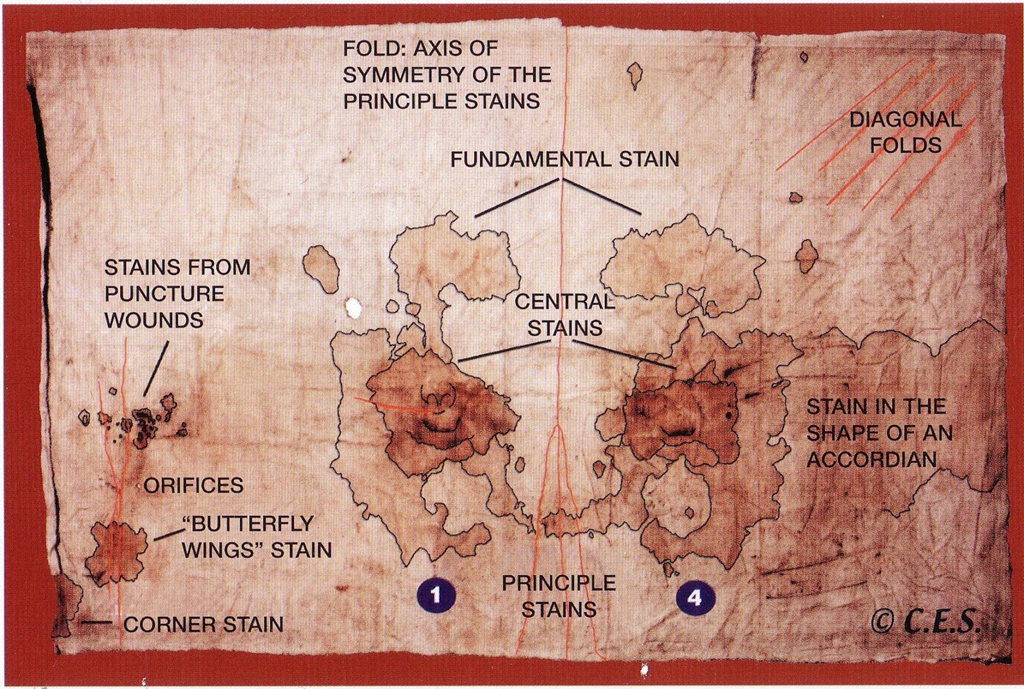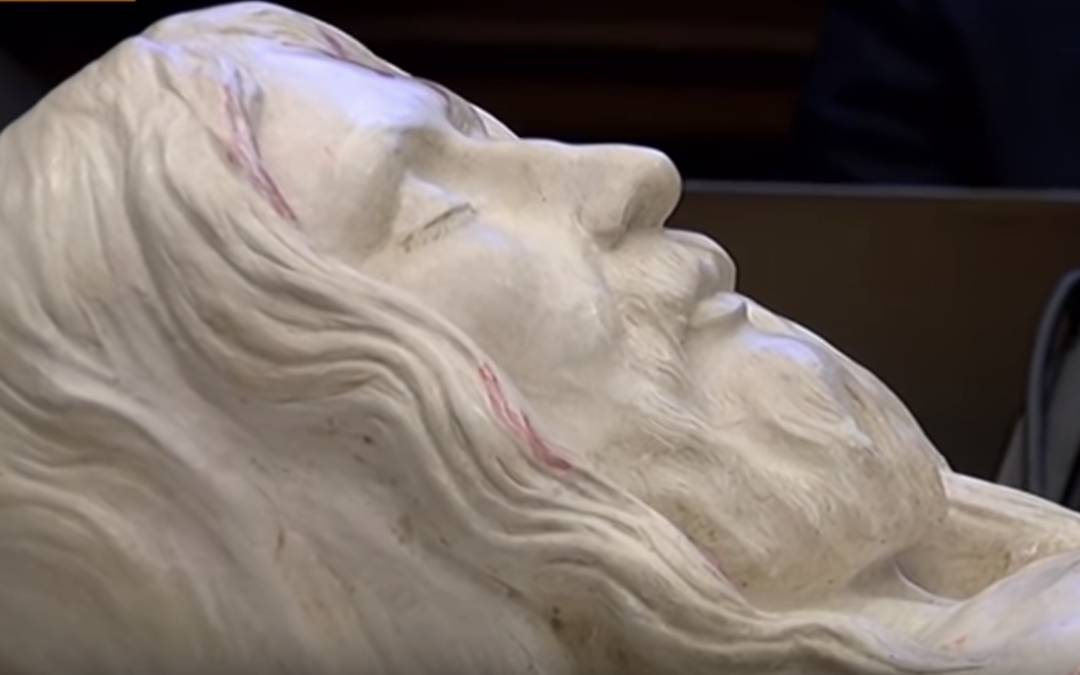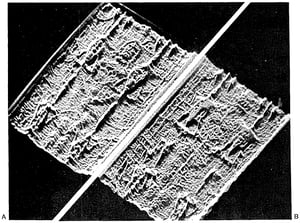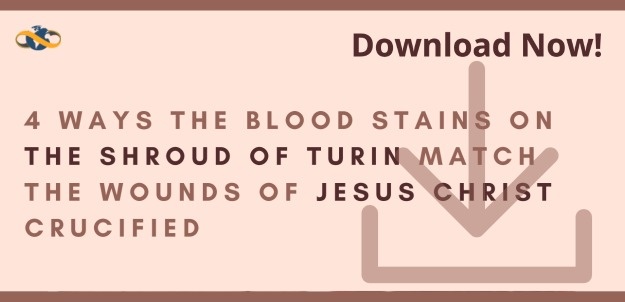The Shroud of Turin has undergone considerably more scientific testing than any other relic in human history.” - Fr. Spitzer
The Shroud of Turin FAQ’s
How old is the Shroud of Turin?
The latest findings place it in the 1st century (see Section I here).
What about the 1988 Carbon 14 dating that placed it in the 13th century?
There are several problems with the 1988 Carbon 14 study, including:
- The samples were collected from a single location.
- This location includes repairs done to the Shroud after the fire of Chambery in 1352.
Fr. Spitzer discusses these problems in this video.
What facts about the cloth are consistent with 1st century origins?
- Composition of the cloth: material of the threads consistent with known 1st century plants.
- 3:1 herringbone pattern known/documented in other 1st century textiles.
- “Faults” found in the weave consistent with 1st century techniques.
- The dimensions of the cloth match the cubit measurement used by Jewish law and custom for a burial cloth (mentioned in the BBC documentary on the Shroud).
Are the Blood stains real?
 The Sudarium Christi / CES
The Sudarium Christi / CES
- Blood is rare AB type+ (same type as found on the Sudarium—see next question below).
- Blood plasma around the blood stains is revealed under UV light.
- Stains match descriptions of the Passion of Jesus in the Gospels.
- Blood particles reveal a high content of bilirubin. Significant for two reasons:
- Consistent with bodily response to extreme trauma (so a dead body could not have been used to create the image).
- Blood with high bilirubin content stays red over time and does not turn dark brown (consistent with stains on the Shroud).
Also, download the pdf below to see how the wounds match the wounds of Christ:
Is there external evidence to confirm the Shroud’s 1st Century Origin?
Yes. There are three pieces of evidence (see Section IV here):
- Pollen grains unique to Judea.
- Roman coins on the eyes of image—minted by Pontius Pilate in 29 A.D.
- Correspondences with another relic, the Sudarium Christi: similar pollen grains; 124 exact matches to wounds on the Shroud; the same AB blood type.
Are there other dating tests for the Shroud?
There are four other dating tests, discussed in Sections II and III here. The results indicate a midpoint average of 50 A.D. (plus or minus 200 years) with a 96% confidence level.
What is so special or mysterious about the image on the Shroud?
- There is no other known image like it.
- Shroud is a precise photographic negative (on non-photographically sensitive cloth).
- Image not produced by paint, dye, vapors, or scorching.
- Image is restricted to uppermost part of fibrils (cause is rapid dehydration).
- The blood imprints precede the formation of the image.
- 3D imaging on Shroud (e.g. bones inside the hand and flesh surrounding the bone). It has been used to produce a 3D sculpture.
 Giulio Fanti, a professor at the University of Padua, has created a 3D image of Christ based on the Shroud of Turin / TgPadova Telenuovo YouTube
Giulio Fanti, a professor at the University of Padua, has created a 3D image of Christ based on the Shroud of Turin / TgPadova Telenuovo YouTube
What is the current explanation for the image on the Shroud? With all the scientific testing, why is it still a mystery?
The image is unique: no other image has its unique characteristics (mentioned above). The only known explanation for the formation of the image is an intense burst of vacuum ultraviolet radiation (equivalent to the output of 14,000 excimer lasers) emitted from every three-dimensional point of the body in the Shroud (see Section V here).
What is the Sudarium Christi or Face cloth of Oviedo? How is it related to the Shroud?
The Sudarium Christi is thought to be the cloth referred to in John’s gospel as “rolled up in a place by itself.”
This cloth, kept in the Cathedral of Oviedo in northern Spain, does not bear an image, but has 124 matching blood and serum stains consistent with those on the Shroud and the same blood type (AB). The length of the nose on both cloths is 8 centimeters (3 inches).
These similarities indicate the high probability that they touched the same face: a crucified man who was crowned with thorns. Similar pollen grains are found on the Shroud and the Sudarium (for a more detailed analysis, see Section IV.C here). Its documented existence begins in the 600’s AD, which makes the Shroud at least that old and definitely not a medieval forgery.
Additional resources:
- A 16-minute video in which Fr. Spitzer highlights facts mentioned above
- Fr. Spitzer’s presentation at the 2017 Napa Institute
- A short summary of the 2017 Napa presentation by Fr. Spitzer
- An excellent summary of the latest findings on the Shroud using other testing methods
- A significant list of books covering the Shroud of Turin
Learn More About the Shroud of Turin
If you would like to learn more about the Shroud of Turin, see the 5 other articles in this series:
- What is the Shroud of Turin? Here’s What Science Says.
- History of the Shroud of Turin (Cutting through the Controversy!)
- Where Did the Shroud of Turin Come From?
- How Old is the Shroud of Turin? 1,970 years (Give or Take 200).
- How Did the Shroud of Turin Get Its Image? (Hint: Think Radiation.)
Cover Image: “Correlation of image intensity on the Turin Shroud with the 3-D structure of a human body shape” / Reprinted with permission from Appl. Opt. 23, 2244-2270 (1984)


